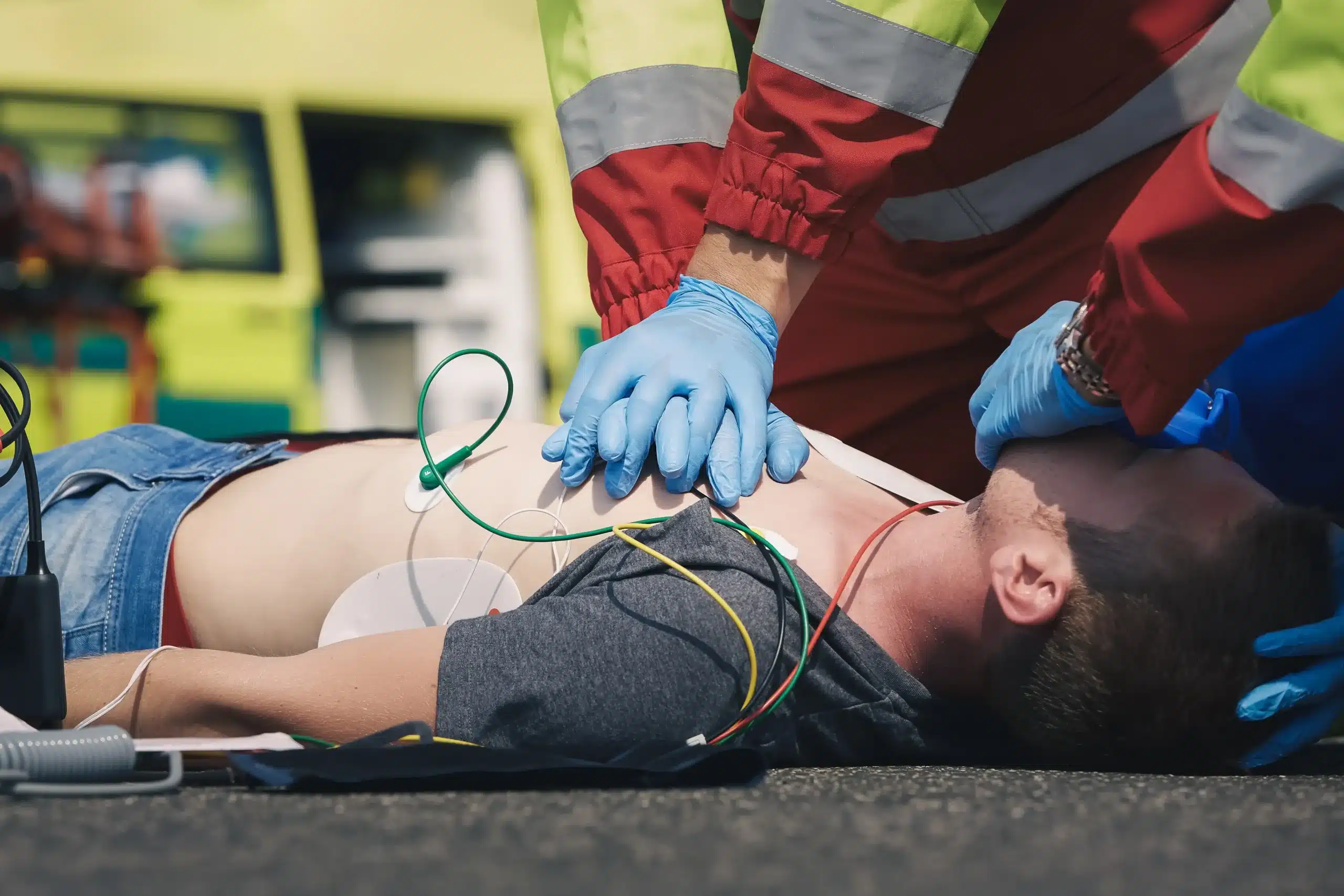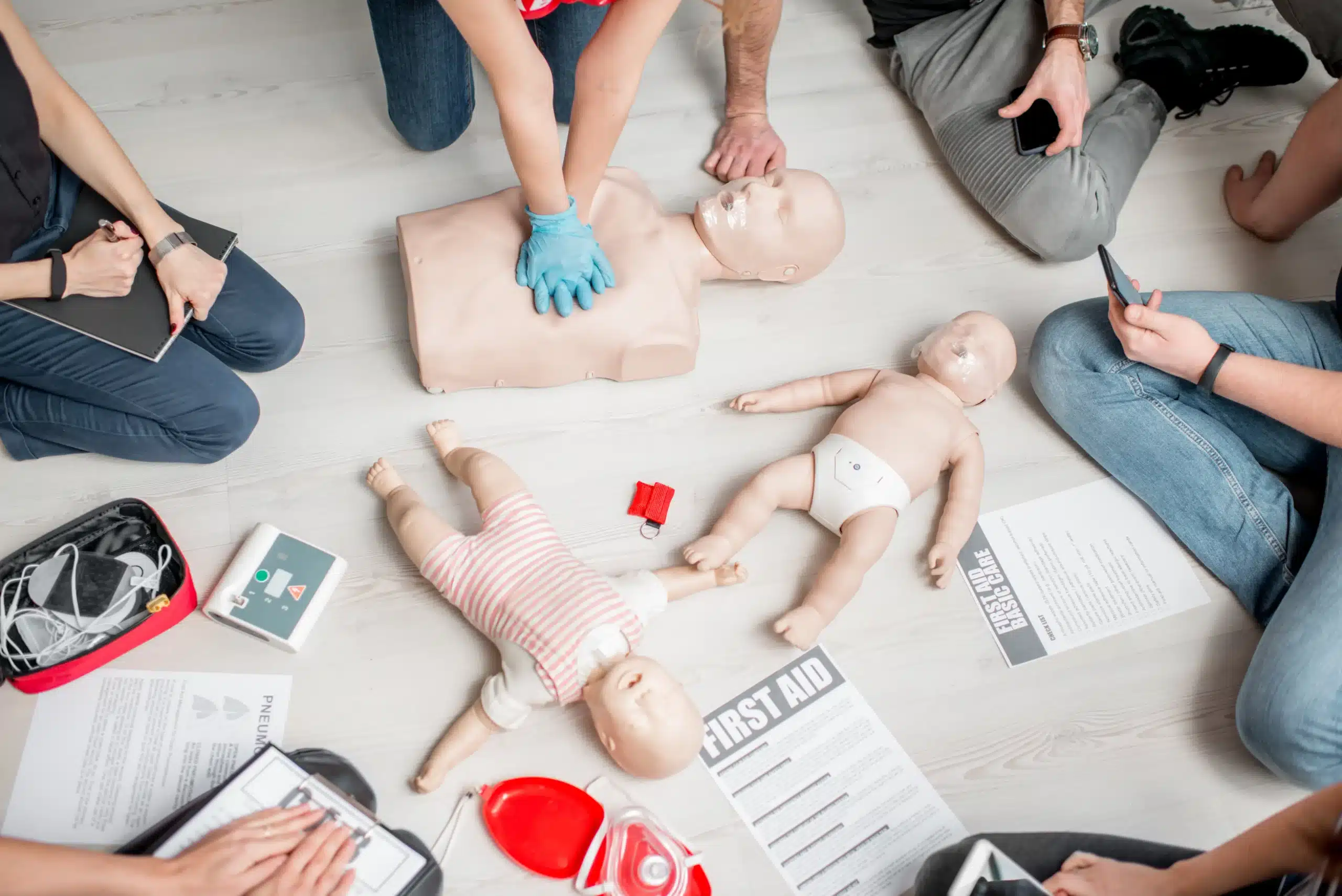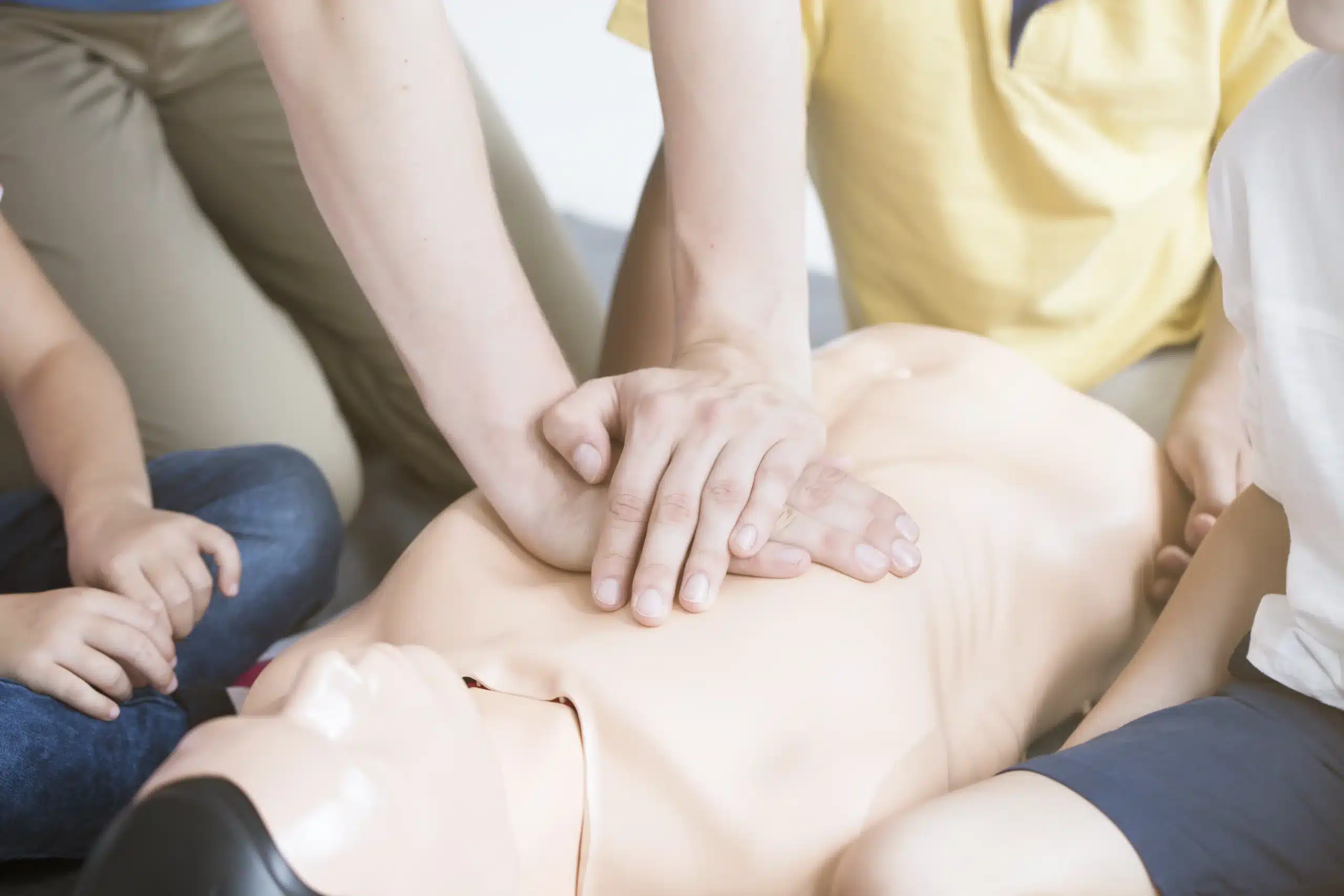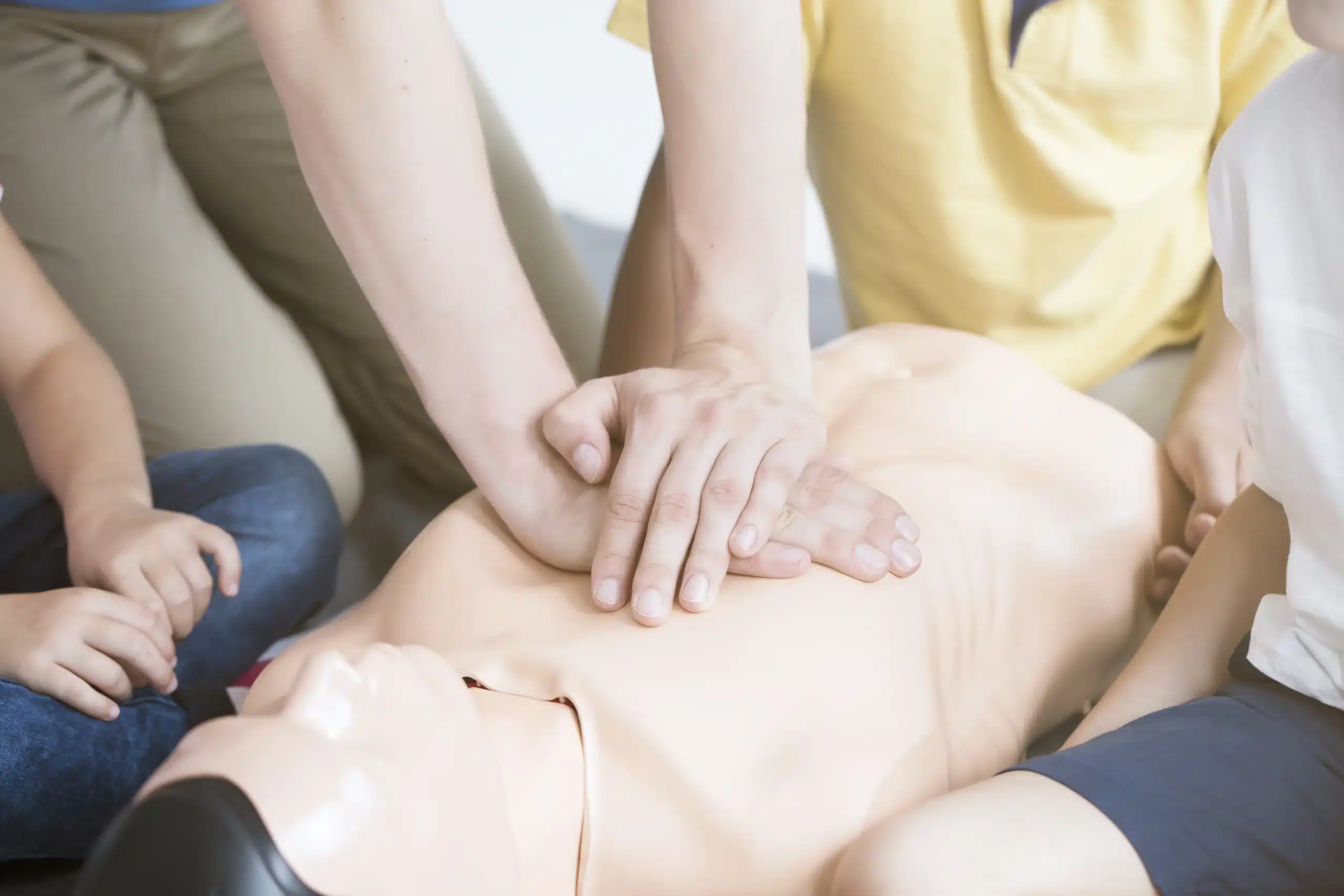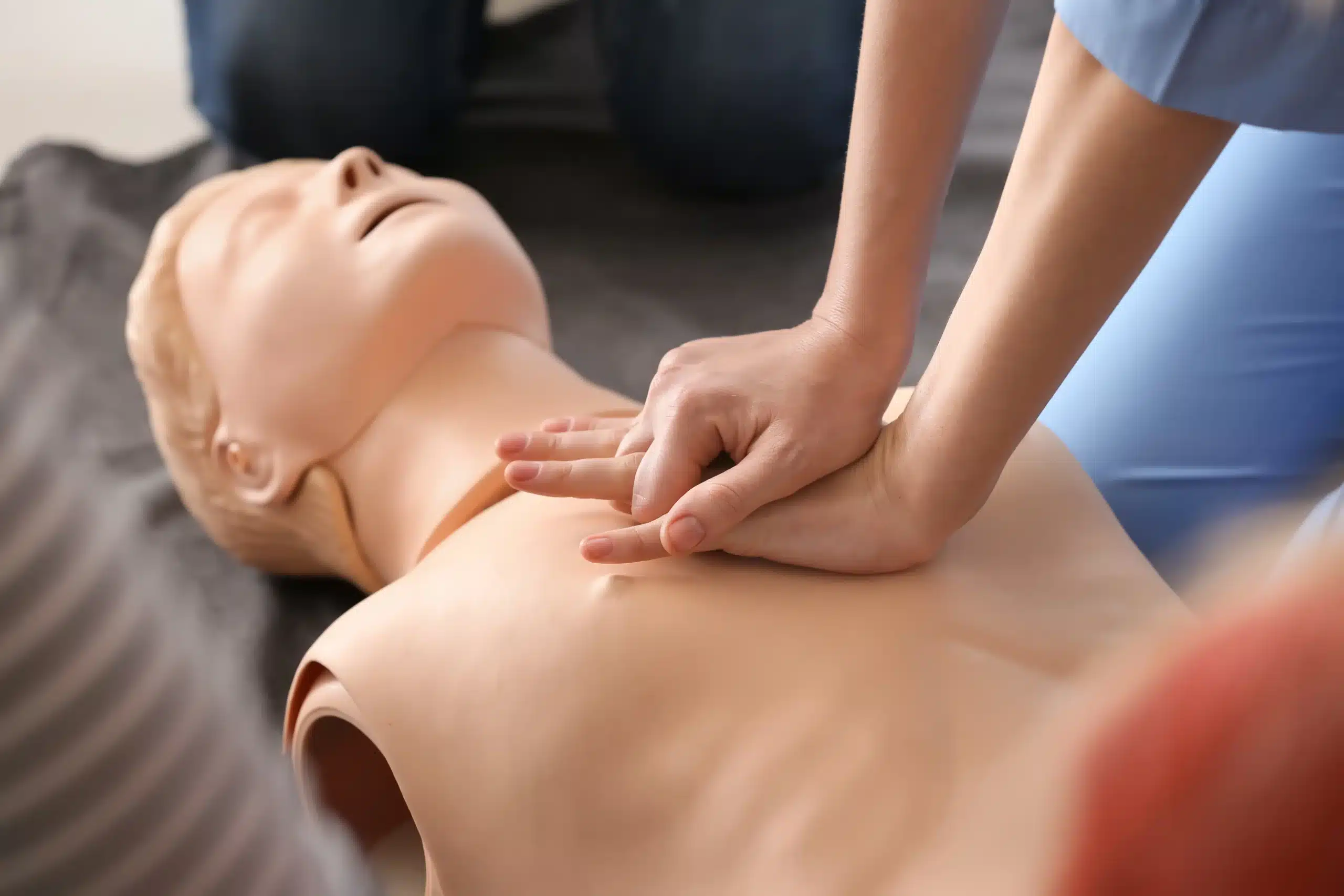California requires specific training for those entrusted with the care of children. EMSA (Emergency Medical Services Authority) courses provide the necessary skills and knowledge in pediatric first aid, CPR, and preventive health and safety practices. But finding the right course can be daunting. This guide is your roadmap to understanding EMSA courses, from course content and prerequisites to locating EMSA courses near me. We’ll also discuss certification renewal, debunk common myths, and help you choose the perfect EMSA course to meet your career goals. Empower yourself with the skills to make a difference – let’s explore the world of EMSA training together.
Key Takeaways
- EMSA certification equips you with essential skills for emergency situations. Whether you’re a childcare provider, aspiring EMT, or simply want to be prepared, these courses offer valuable training in first aid, CPR, and more.
- Finding the right EMSA course involves understanding your career goals and the program requirements. Consider your professional aspirations, the time commitment, and the financial investment when selecting a course.
- Los Gatos CPR Classes provides high-quality, convenient EMSA-approved training. We offer personalized instruction, hands-on practice, and flexible scheduling to meet your needs.
What are EMSA Courses? Who needs them?
EMSA courses are specialized training programs developed by the California Emergency Medical Services Authority (EMSA). These courses provide the essential skills needed in emergency medical situations. They’re designed for a wide range of people, from emergency medical services (EMS) professionals and educators to childcare providers and the general public.
Think of EMSA as the governing body that sets the standards for emergency medical training in California. Their courses cover everything from EMT and paramedic certifications to specialized training like how to use an epinephrine auto-injector (EpiPen). This means whether you’re a seasoned paramedic needing to renew your credentials or a teacher wanting to be prepared for a medical emergency in the classroom, there’s likely an EMSA course for you. You can explore the various training programs available on the EMSA website.
Childcare providers, especially, benefit from EMSA-approved training. These courses cover Pediatric First Aid and CPR and often include a focus on preventive health and safety measures. This specialized training ensures childcare providers are well-equipped to handle emergencies involving children. If you’re responsible for the well-being of children, having this training can make all the difference. We offer a variety of EMSA-approved CPR and First Aid courses at Los Gatos CPR Classes.
Beyond specific professions, anyone interested in gaining practical, potentially life-saving skills can take an EMSA course. Knowing how to respond effectively in a crisis can bring peace of mind and empower you to help others in need. We encourage you to contact us to learn more about our offerings.
EMSA Course Types & Content
California’s Emergency Medical Services Authority (EMSA) oversees a comprehensive system of training programs for emergency medical personnel. Whether you’re hoping to become a paramedic, work in childcare, or are already an EMS professional, understanding the different EMSA course types is essential. This section breaks down the core offerings, from EMT and paramedic training to specialized courses for childcare providers and continuing education opportunities.
EMT & Paramedic Training
EMSA provides a structured career path for aspiring Emergency Medical Technicians (EMTs) and paramedics. The training programs range from entry-level EMT certification to the advanced life support skills required of paramedics. These courses cover a wide range of topics, including trauma care, patient assessment, and emergency medical procedures. The specific curriculum and requirements vary depending on the certification level. Paramedic training is significantly more extensive than EMT training, reflecting the advanced skills and responsibilities associated with the role. You can explore the different levels of EMS certifications on the EMSA website.
Pediatric First Aid & CPR
For those working with children, EMSA-approved pediatric first aid and CPR training are often mandatory. These courses equip childcare providers, educators, and other professionals with the skills to respond to medical emergencies involving infants and children. The training covers essential topics such as CPR techniques specific to children, recognizing signs of illness or injury, and administering basic first aid. This specialized training is crucial for maintaining a safe and healthy environment for children in various settings, from daycare centers to schools.
Continuing Education for EMS Professionals
The medical field is constantly evolving, and EMS professionals must stay current with the latest advancements and best practices. EMSA supports this through continuing education courses designed to refresh and expand the knowledge of existing EMS personnel. These courses cover a variety of topics, from new treatment protocols to advanced life support techniques. Continuing education not only helps professionals maintain their certifications but also ensures they can provide the highest quality of care in emergency situations. Check the EMSA website for specific program details and locations.
Find EMSA-Approved Training Near You
Finding the right EMSA-approved training program is easier than you think. Whether you’re pursuing initial certification or continuing education, understanding your options and using available resources can simplify your search. Here’s how to find EMSA-approved training near you:
Online Course Locators
The California Emergency Medical Services Authority (EMSA) website offers a comprehensive, searchable list of approved training programs. This database allows you to filter by program type, county, and other criteria, making it a convenient tool for finding courses that meet your specific requirements. You can also explore program details and confirm a program’s EMSA approval status.
Local Training Providers
While the EMSA website provides a statewide overview, focusing your search on local providers offers several advantages. Many training providers indicate the counties they serve on their websites. Look for programs mentioning your county or nearby areas to ensure instructors and classes are accessible. For those seeking EMSA-approved child care training, resources like this helpful guide offer additional information on finding suitable programs. These programs cover essential topics like First Aid, CPR, and Preventive Health and Safety Practices. Choosing a local provider often translates to more convenient class schedules and potentially reduced travel expenses.
EMSA Course Prerequisites & Requirements
Before you jump into an EMSA course, it’s helpful to understand the requirements. These ensure all participants are prepared for the program and the responsibilities of working in emergency medical services.
Age & Education
Generally, you must be at least 18 years old and have a high school diploma or equivalent to enroll in an EMSA course. This baseline ensures students have the foundational knowledge needed to grasp the course material. Some programs may have additional educational requirements, so check specifics with your chosen provider.
Health & Background Checks
EMSA courses often require a background check and sometimes a medical evaluation. This is standard practice to maintain the safety and integrity of the EMS profession. These checks help verify that candidates meet the necessary standards for working in this field. You’ll likely need to submit fingerprints as part of this process.
CPR Certification & Other Prerequisites
You’ll need a current CPR certification, usually the American Heart Association (AHA) Basic Life Support (BLS) certification, before starting most EMSA courses. This is essential because CPR is a fundamental skill used frequently in emergency medical situations. Additional requirements might include providing immunization records and a recent physical exam. These prerequisites help ensure the health and safety of both students and the patients they will be treating. You can find more information on CPR and First Aid certification courses at Los Gatos CPR Classes.
The EMSA Course Experience: What to Expect
So, you’re ready to pursue EMSA certification—congratulations! What can you expect from the training experience? This section covers the typical course structure, duration, and the importance of hands-on learning.
Course Duration & Format
EMSA courses vary in length and format depending on the specific certification. For example, becoming an EMT in California typically takes two to six months, factoring in both course duration and application processing. Intensive programs, like 14-day EMT boot camps, are also available for a faster track. These accelerated courses pack a lot of information into a short timeframe, so be prepared for a demanding schedule. Many programs offer flexible scheduling options, including part-time and online courses, to accommodate different lifestyles.
Hands-on Training
EMSA courses aren’t just about textbooks and lectures. Practical, hands-on training is critical for real-world emergencies. Expect opportunities to practice essential skills like CPR, bandaging, splinting, and airway management. Many programs use simulations and real-world scenarios to develop your critical thinking and decision-making skills under pressure. These sessions, often led by experienced EMS professionals, provide valuable insights and guidance. This hands-on experience builds confidence and ensures you’re prepared to apply your knowledge in the field. For example, courses meeting the Advanced EMT National Education Standards often incorporate extensive hands-on training to prepare students for the NREMT exams and real-world practice.
EMSA Certification & Renewal
Getting certified and maintaining your EMSA certification are essential for your career as an emergency medical responder in California. Here’s a breakdown of exams, state certification, and continuing education requirements.
Exams & State Certification
After you finish your EMSA-approved training, you’ll need to get a state-issued EMT or AEMT certification. The California Emergency Medical Services Authority (EMSA) oversees this process. They require anyone working at the EMT or AEMT level to have a valid certification from a certifying entity or Local Emergency Medical Services Authority (LEMSA).
Renewal & Continuing Education
Your EMSA certification requires regular renewal to stay current and keep your skills sharp. For childcare providers in California, renewal is every two years and involves four hours of pediatric First Aid training and four hours of pediatric CPR training. No exceptions are made for shorter courses, so plan accordingly. This process ensures you’re always up-to-date on the latest guidelines and best practices. You can find more information on EMT certification timelines at California EMT. Ongoing learning is key to providing effective emergency medical services.
Choose the Right EMSA Course
Picking the right EMSA course is a big decision. It’s not just about checking a box; it’s about investing in your future. Think of it as choosing the right tool for the job – you need the right training to reach your specific goals. Here’s how to break down the decision:
Your Career Goals
First, consider your professional goals. Do you envision a fast-paced career as a paramedic, responding to emergencies? Or are you drawn to working with children and want the skills to handle emergencies in a childcare setting? EMSA offers training programs for various professions, from EMTs and paramedics to educators and school bus drivers. Understanding your career aspirations will guide you toward the right certification. For example, if a career in emergency medical services is your goal, research EMT or Paramedic certifications, which are essential for the field. EMSA also provides continuing education courses to help you stay current with advancements in emergency medical care.
Time & Financial Commitments
Once you have a clearer picture of your career goals, consider the practicalities: time and money. Becoming EMT certified in California typically takes two to six months, depending on the program and your County EMS Authority’s processing time. Factor in the length of the EMT class and any additional requirements. A realistic timeline will help you balance training with your current commitments. The total cost of an EMSA-approved course varies. One program estimates around $5,000 to cover registration, tuition, a skills week, books, and online resources. Check with different providers to compare costs and find a program that fits your budget. Understanding the financial investment upfront helps you plan and avoid surprises. Thinking through these practical considerations will help you choose an EMSA course that aligns with both your career aspirations and your lifestyle.
EMSA Course Myths & Facts
It’s easy to misunderstand the scope and requirements of EMSA (Emergency Medical Services Authority) courses. Let’s clear up some common misconceptions:
Myth: EMS professionals only respond to medical emergencies.
Fact: EMS professionals are trained to handle a much broader range of emergencies than you might think. Think car accidents, natural disasters, specialized rescues—they do it all. Their skills extend beyond medical emergencies to include trauma, environmental hazards, and even non-medical situations, making them vital for effective emergency response.
Myth: Paramedics are just ambulance drivers. Fact: Being a paramedic is about so much more than driving an ambulance. These are highly trained medical professionals providing advanced care on the scene and en route to the hospital. Their expertise includes administering medications, managing airways, and performing other life-saving procedures.
Myth: All EMS courses are the same. Fact: EMS courses vary quite a bit. From curriculum and certification to the overall level of training, each program has its own focus. Research is key. Make sure you choose a course that truly aligns with your career goals and meets your state’s requirements.
Myth: You don’t need any prior experience to take EMS courses. Fact: Some introductory EMS courses welcome beginners, but many advanced programs expect you to have some basic knowledge. A foundation in medical terminology and basic life support skills is often required. Always check the specific prerequisites for the course you’re interested in.
EMSA Courses at Los Gatos CPR Classes
Our EMSA Courses
Los Gatos CPR Classes offers EMSA-approved Child Care Preventive Health and Safety courses. These courses satisfy California’s requirements for childcare providers, covering pediatric CPR, first aid, and injury prevention. This training gives you the skills to create a safe and healthy environment for the children under your care. We offer these essential courses daily to accommodate busy schedules. Learn more about our CPR and First Aid certification courses.
Why Choose Us?
Los Gatos CPR Classes prioritizes high-quality, convenient, and affordable training. Our experienced instructors are passionate about safety education. We keep our class sizes small for personalized instruction and hands-on practice. We also offer group discounts to make training more accessible. Our low price guarantee ensures you’re getting the best value. We serve Los Gatos, San Jose, and Saratoga, CA. Contact us with any questions.
Related Articles
- EMSA Child Care Health & Safety – Los Gatos CPR Classes
- Advanced Cardiac Life Support (ACLS) in San Jose – Los Gatos CPR Classes
- CPR Certification in Los Gatos: Your Guide – Los Gatos CPR Classes
- BLS Certification in San Jose: Your Comprehensive Guide – Los Gatos CPR Classes
- BLS Renewal Near Me: Your Complete Guide – Los Gatos CPR Classes
Frequently Asked Questions
What’s the difference between EMT and Paramedic training?
EMT training provides a foundational level of emergency medical care, while Paramedic training builds upon that foundation with more advanced life support skills and a broader scope of practice. Think of it as a ladder – EMT is the first rung, and Paramedic is a higher rung with greater responsibility and a more in-depth understanding of emergency medicine.
How do I find an EMSA-approved course near me?
The easiest way is to use the online course locator on the EMSA website. You can search by program type and location to find courses that fit your needs and schedule. Also, check with local training providers directly, as they often list EMSA-approved courses on their websites.
What if I don’t have any medical background? Can I still take an EMSA course?
Absolutely! While some advanced EMSA courses might require prior medical knowledge, many introductory courses are designed for people with no medical background. These courses provide the foundational knowledge and skills you need to get started in emergency medical services. Just be sure to check the specific prerequisites for the course you’re interested in.
How long does it take to complete an EMSA course?
The length of an EMSA course depends on the specific certification you’re pursuing. Some courses can be completed in a few weeks, while others, like paramedic training, can take several months. There are also accelerated programs available if you’re looking for a faster track to certification.
What kind of hands-on training can I expect in an EMSA course?
EMSA courses emphasize practical skills, so expect plenty of hands-on learning. You’ll have opportunities to practice essential skills like CPR, bandaging, splinting, and using emergency medical equipment. Many programs also incorporate simulations and real-world scenarios to help you develop your critical thinking and decision-making skills in a realistic environment.
